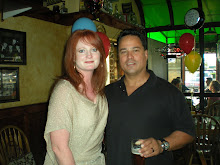Donna Twardy
EDUC 422
March 16, 2009
This article was about how today’s educators can keep up with technology by creating their own Personal Learning Network (PLN). In the past, a PLN could encompass friends, families, and colleagues, all who share resources and professional information. However, due to the changing times, information and communication technologies are multiplying and there is a vast amount of resources that educators can keep current on to share with their students, or to use in lesson planning.
The three types of PLN’s discussed in the article are Personally maintained synchronous connections, which include instant messaging, teleconferencing, and virtual worlds. Some examples of these are iChat, Skype, Twitter, or Second Life. These are compared to attending a meeting at work, but without the traditional barriers of geography, background, language, and culture.
The second type of PLN discussed is the Personally and socially maintained semi synchronous connections, which include collaboration tools such as Google Docs, group discussion boards, and comment walls like Facebook. The advantage of these types of sites is that one can participate in a discussion regardless of the hour, or time zone.
The third type of PLN is the Dynamically maintained asynchronous connections, which connects the user with content sources he or she has identified as valuable. The information comes to the user, rather than the user going out to search for the information. The main tool in this category is the RSS aggregator, such as Google reader, or Netvibes. One can subscribe to an RSS feed and the new desired information will be periodically sent to a central location to be viewed at the user’s convenience. Delicious is another valuable social bookmarking tool that falls into this category. This technology has inspired a shift from hunting and gathering information to having the information organize and deliver itself to you.
1. How are these PLN’s used in a classroom?
A classroom teacher can use PLN’s to integrate current information into lesson plans. For example, in a unit on the Iditarod race in Alaska, a teacher can add an RSS feed to their network to get daily information on the race to share with the class. The temperature and weather conditions are updated regularly, and the status of certain mushers can be tracked with an RSS feed.
2. How is an RSS feed different from using a Google search for information?
There is so much information on the web that a Google search may return hundreds of thousands of results, most of which you would have to scan for reliability. However, if you use a social bookmarking site, like Delicious, many people have already scanned for reliability and have narrowed down the results for you. The bookmarked sites are likely of better quality since someone valued them to bookmark them for later use. You can also subscribe to the RSS feed for your desired search so that all subsequently marked Web sites tagged will come to you as well.
Warlick, D. (3/2009). Grow your personal learning network. Learning and Leading With Technology, Retrieved March 16, 2009, from http://www.iste.org/Content/NavigationMenu/Publications/LL/Current_Issue/L_L_March_April.htm
Subscribe to:
Post Comments (Atom)




No comments:
Post a Comment